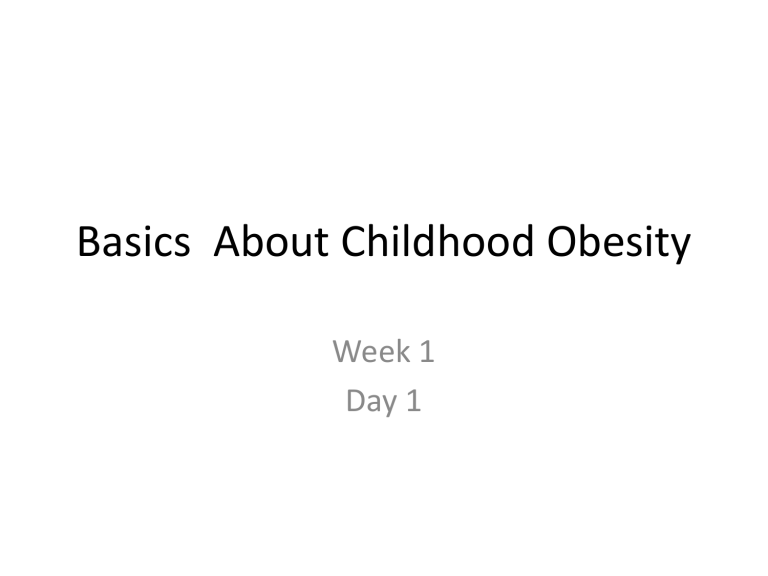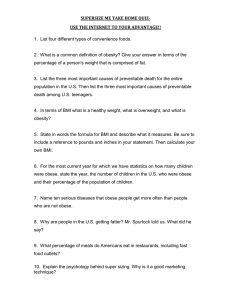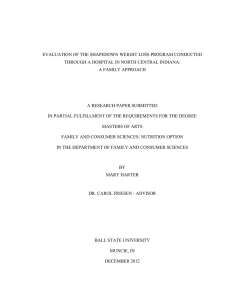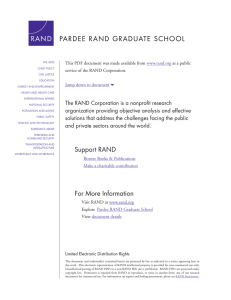Basics About Childhood Obesity

Basics About Childhood Obesity
Week 1
Day 1
How is overweight and obesity measured?
• Body mass index (BMI) is a measure used to determine childhood overweight and obesity. It is calculated using a child's weight and height. BMI does not measure body fat directly, but it is a reasonable indicator of body fatness for most children and teens.
• Overweight is defined as a BMI at or above the 85th percentile and lower than the 95th percentile for children of the same age and sex.
• Obesity is defined as a BMI at or above the 95th percentile for children of the same age and sex.
BMI charts
BMI Charts cntd…
What are the consequences of obesity?
• Obese children are more likely to have-
– High blood pressure and high cholesterol, which are risk factors for cardiovascular disease (CVD). In one study, 70% of obese children had at least one CVD risk factor, and 39% had two or more.
– Increased risk of impaired glucose tolerance, insulin resistance and type 2 diabetes.
– Breathing problems, such as sleep apnea, and asthma.
– Joint problems and musculoskeletal discomfort.
– Fatty liver disease, gallstones, and gastro-esophageal reflux (i.e., heartburn).
– Obese children and adolescents have a greater risk of social and psychological problems, such as discrimination and poor self-esteem, which can continue into adulthood.
– Health risks later…
• Obese children are more likely to become obese adults. Adult obesity is associated with a number of serious health conditions including heart disease, diabetes, and some cancers.
• If children are overweight, obesity in adulthood is likely to be more severe.
2009 State Prevalence Among Low-Income Children
Ages 2-4 Years
2007-2009 Country Obesity Prevalence Among Low-Income
Children Aged 2-4 Years
What does this tell us?
What causes childhood obesity?
• Childhood obesity is the result of eating too many calories and not getting enough physical activity.
• Watch: Childhood Obesity in America
• Time to write: Take 3-5 minutes to write down on a piece of paper your reactions to the clip. Share these reactions after the writing is completed.
Influence of factors at home, school, or in the community
• Brainstorm as a class the difference influences that could have an impact on obesity:
• Compare with the list below…
• Sugar drinks and less healthy foods on school campuses.
• Advertising of less healthy foods.
• Lack of daily, quality physical activity in all schools.
• No safe and appealing place to play or be active.
• Limited access to healthy affordable foods.
• Greater availability of high-energy-dense foods and sugar drinks
• Increasing portion sizes
• Television and media










